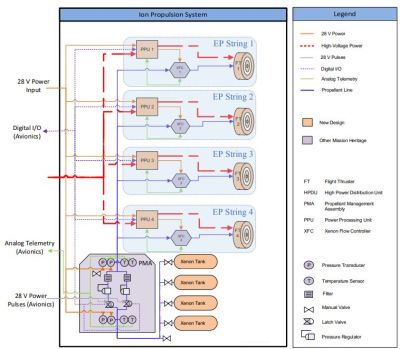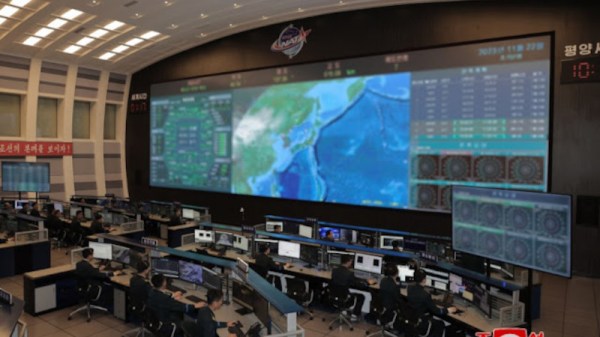Earlier this week, another nation joined the still relatively exclusive club of those which possess a satellite launch capability. North Korea launched their Malligyong-1 spy satellite, and though it has naturally inflamed the complex web of political and military tensions surrounding the Korean peninsula, it still represents something of a technical achievement for the isolated Communist state. The official North Korean news coverage gleefully reported with much Cold War style rhetoric, that Kim Jong-Un had visited the launch control centre the next day and viewed intelligence photographs of an American base in Guam. Could the satellite have delivered in such a short time? [SatTrackCam Leiden] has an interesting analysis. Continue reading “Could North Korea’s New Satellite Have Spied On Guam So Easily?”
Space664 Articles
Harvard SETI Project Helps ID Mystery Sound
Last month, thousands of people in New Hampshire took to social media to report an explosion in the sky that was strong enough to rattle windows. Naturally aliens were blamed by some, while cooler heads theorized it may have been a sonic boom from a military aircraft. But without any evidence, who could say?
Luckily for concerned residents, this was precisely the sort of event Harvard’s Galileo Project was designed to investigate. Officially described as a way to search for “technological signatures of Extraterrestrial Technological Civilizations (ETCs)”, the project keeps a constant watch on the sky with a collection of cameras and microphones. With their gear, the team was able to back up the anecdotal reports with with hard data.
Continue reading “Harvard SETI Project Helps ID Mystery Sound”
Pi-lomar Puts An Observatory In Your Hands
Humans have loved looking up at the night sky for time immemorial, and that hasn’t stopped today. [MattHh] has taken this love to the next level with the Pi-lomar Miniature Observatory.
Built with a Raspberry Pi 4, a RPi Hi Quality camera, and a Pimoroni Tiny2040, this tiny observatory does a solid job of letting you observe the night sky from the comfort of your sofa (some assembly required). The current version of Pi-lomar uses a 16mm ‘telephoto’ lens and the built-in camera libraries from Raspbian Buster. This gives a field of view of approximately 21 degrees of the sky.
While small for an observatory, there are still 4 spools of 3D printing filament in the five different assemblies: the Foundation, the Platform, the Tower, the Gearboxes and the Dome. Two NEMA 17 motors are directed by the Tiny2040 to keep the motion smoother than if the RPi 4 was running them directly. The observatory isn’t waterproof, so if you make your own, don’t leave it out in the rain.
If you’re curious how we might combat the growing spectre of light pollution to better our nighttime observations, check out how blinking can help. And if you want to build a (much) larger telescope, how about using the Sun as a gravitational lens?
Continue reading “Pi-lomar Puts An Observatory In Your Hands”
Continental Europe’s First Spaceport – And It’s Above The Arctic Circle!
When we think of a space launch it’s likely our minds might turn to the lush swampland of Florida’s Cape Canaveral, or the jungle of Kourou in Guyana. These are both in the tropical regions on sites as close to the Equator as the governments who built them could find, because the higher rotational speed of the planet at its widest point gives departing rockets a bit of extra kick. Even the Soviet Baikonur cosmodrome in modern-day Kazakhstan which sits at around 45 degrees North, was chosen in part to lie in one of the more southerly Soviet republics.
It’s unexpected then to report on the opening of what may at the time of writing be the world’s newest spaceport, situated on the island of Andøya in northern Norway, at around 69 degrees North. Just what is going on?
The answer for the German company Isar Aerospace is that their launches from the site will be ideally placed not for low-inclination orbits but for polar orbits, something of a valuable commodity and a worthy point of competition when compared to equatorial sites. We have shamefacedly to admit that we’re not completely au fait with Norwegian geography, so it took us a minute to find Andøya towards the top of the country’s westward chain of islands.
The spaceport itself lies in a bay facing westward over the Norwegian Sea, and the launch platform is on a stone jetty protruding into the water. It appears to be a beautiful landscape, a suitable reward for any hardy souls who make the trip to watch a launch. Unexpectedly the spaceport stands alone in Continental Europe, though before too long it’s likely to be joined by other projects including one in northern Scotland. European skies are likely to become busier over the coming years.
Lunar Gateway’s Advanced Solar Electric Propulsion Engine Passes Initial Qualification Tests
Recently NASA announced earlier this month that the 12 kW Advanced Electric Propulsion System (AEPS) — which is scheduled to form an integral part of the Lunar Gateway when it is launched — has passed a number of qualification tests, after a rather tumultuous number of years during its development.

Originally designed since 2015 to propel the AARM mission to fetch rocks from an asteroid, when AARM was cancelled it became the cornerstone of the Lunar Gateway that should enable astronauts in the Artemis program to land on the Moon.
The AEPS is a solar electric propulsion system that uses xenon as its propellant, much like existing ion engines. Where it differs is in the power output, which should allow it to work as the primary propulsion method for large deep space and cargo missions. Much of the development and projections are covered in a 2017 presentation at the International Electric Propulsion Conference (IEPC).
Although the projected dates for much in this presentation (e.g. first flight of SLS Block 1 was in 2022, not 2018) are decidedly off, once the individual AEPS thrusters are validated, three strings will be mounted on the Power and Propulsion Element (PPE) that forms the core of the Lunar Gateway and is scheduled to be launched in November of 2025.
Top image: AEPS installed for testing at NASA Glenn. (Credit NASA)
Using Gravitational Lensing To Transmit Power And Detect Aliens
Most of us will have at some point have bought a long power cable to charge the bike on the deck, but [Slava G. Turyshev] has a slightly more ambitious idea. In this recent paper, he outlines how an advanced civilization could use a star or two to transmit power or send signals over an interstellar distance. And his idea is also simple enough that we could do it right now, with existing technology, or detect if someone else is doing it.
Continue reading “Using Gravitational Lensing To Transmit Power And Detect Aliens”
Need A Low-Mass Antenna In Space? Just Blow It Up!
A parabolic antenna is a simple enough device, a curved reflector designed to focus all the radiation from the direction it’s pointed into a waveguide or antenna at its feedpoint. They’re easy enough to make for a radio amateur, but imagine making one for a spacecraft. It must fold into a minimal space and weigh almost nothing, both difficult to achieve. An engineering academic doing work for NASA, [Christopher Walker], has a new way to make the parabolic surface that solves the spacecraft designer’s problems at a stroke, it forms its parabolic reflector on the inside of an inflatable structure. In this way relatively huge reflectors can be built in space, with easy folding and very little weight. Continue reading “Need A Low-Mass Antenna In Space? Just Blow It Up!”

















